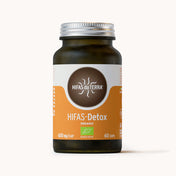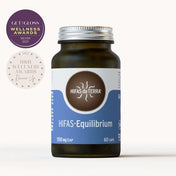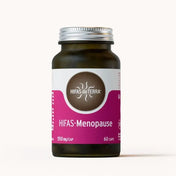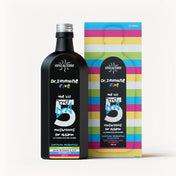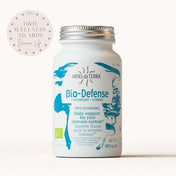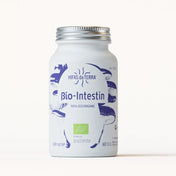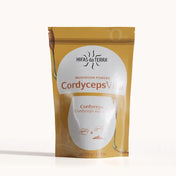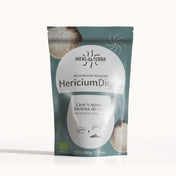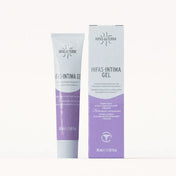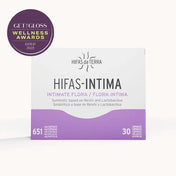TABLE OF CONTENTS

Antioxidant Foods Are Back in the Spotlight - Wonder Why? Living Tires us out. The SPEED AND THE PACE AT WHICH WE Live Can Accelerate The Wear and Tear On Our Body.
Too Little Sleep, An Inadequate diet, radiation, pollutants and toxins, Can Promote Oxidative Stress and make it difficult for our body to Eliminate Free Radicals. We Will Look in Detail at How To Minimise The Impact of First Free Radicals On Our Cells and Why Our Body Deerves Special Attention in The Face of Oxidative Stresses.
What is oxidation?
Cellular oxidation Is a Biochemical Process Essential for the Survival of Our Cells. During this process, Cells obtain various nutrients from oxygen to produces energy (ATP). So-Called Free Radicals are a Type of Waste Substance, and If they are not properly Expelled They Can Cause Cell Damage.
Time, Chronic Stress, and a sedentary Lifestyle (which equates to less than 5,000 steps a day) can unpaid the body's ability to scavege free radicals. Antioxidants, Both Endogenous and from the diet, play an important role in neutralming these free radicals, helping to protect cells Against oxidative stress and maintain cellular balance or homeostasis
What can antioxidants do?
Antioxidant Foods Play A crucial role in PROTECTING THE BODY Against oxidative stress caused by excess free radicals and reactive oxygen species (ros). If oxidative action is not curbed:
- The Process of Fat Oxidation you increase the tendency of fats to adhere to Blood Vessel Walls. For This Reason, Antioxidants Are Said to Promote Cardiovascular Health.
- The Cancence of Oxidative Stress On Proteins You have been Linked to Cell deterioration and Cell Death, I.E. it you have been linked to incidents of Degenerative Process and Ageing.
- The Impact of free radicals on genes You have Been Demonstated to Be Relay in the Development of tumours.
So we have just seen, Oxidation Can Damage Cells, Altering Proteins, Cell Membrane Lipids and DNA, Contribution to Premature Ageing and The Development of Various Chronic Diseases Such as cardiovascular disease, cancer and neurodegenerative disorders.

What are the best antioxidant foods
By Eating a Diet Rich in Antioxidant Foods, E.G. Fruits, vegetables, Nuts, Seeds and Whole Grains, (Rich Sources of Vitamins c and AND, Selenium, and flavonoids) The Body's Antioxidant System Can Be Strengthened.
Not only does eating well help to prevent Cell Damage and Reduces The Risk of Disease, It Can Also Help To Immune Respons and promote OPTIMAL Overall Health. Antioxidants Have Even Been Linked to Reproductive Health.
WHEN recommending antioxidant intake, Whether Through a Color-rich diet or Supplements, to prescribe or Health Professional is Advisable to determine the optimal dosing protocol on a case by Case Basis.
If you are intersted in this content, do not hesitate to subscribe to our newsletter to recueive relevant Healthcare Content.

The Top 10 Antioxidant Foods
What are the Most Powerful Antioxidant Foods? Although there are many lists available, all of them contain foods with a high or outstanding content of Polyphenols, carotenoids and vitamins c and e, as well as other minerals:
- Pomegranate, Grapes, Blueberries, Blackberries, Strawberries and Other Red Fruits.
- Tomato
- Pepper
- Green Leafy vegetables
- Broccoli
- Carrot
- Citrus Fruit
- Green Tea and Cocoa
- Almonds
- Mushrooms used in traditional medicine: Chaga, Reishi
This list haen compiled from the documentation of Harvard University published on the website of the Department of Nutrition at The Harvard T.H. Chan School of Public Health. As can be seen, many of the foods listed above has more than one antioxidant potential to note:
- Vitamin c: Broccoli, Brussels Sprouts, Melon, Cauliflower, Grapefruit, Green Leafy vegetables (Spinach, Turnips, Kale, etc.), Melon, Kiwi, Lemon, Orange, Papaya, Snow Peas, Strawberries, Sweet Potato, Tomatoes and Peppers.
- Vitamin e: Almonds, Avocado, Chard, Green Leafy vegetables, Peanuts, Red Peppers, Spinach (Boiled) and Sunflower Seeds.
- Carotenoids, including beta-caroteen and lycopene: Apricots, Asparagus, Beetroot, Broccoli, Melon, Carots, Peppers, Kale, Manges, Turnips, Oranges, Peaches, Pink Grapefruit, Pumpkin, Winter Squash, Spinach, Sweet Potato, Tangerines, Tomatoes and Watermelon.
- Selenium: Nuts, Fish, Seafood, Beef, Poultry, Barley and Brown Rice.
- Zinc: Beef and Poultry, Oysters, Shrims, Sesame Seeds, Pumpkin Seeds, Chickpeas, Lentils, Cashew Nuts ...
Phenolic Compounds: Quercetin (Apples, Red Wine, Only), Catechins (tea, cocoa, berries), Resveratrol (Red and White Wine, Grapes, Peanuts, Beerries), Comaric Acid (Spices, Beerries), Anthocyanins (Blueberries, Strawberries).

Chaga, Mushroom with Potnt Antioxidant Properties?
Up to this point, Reishi You have the Most Renowned and Extensively Studied Mushroom Owing to its Extensive History in Traditional Medicine. In Fact, Thanks to Ganoderma lucidum, OHER SPECIES Such As Cordyceps, Shiitake Or Lion's Mane, Also of Great Interst in Health Care, Have Been Studied In Dept.
Interestingly, The Research Driving on Ganoderma lucidum You have paved the way for in-depth studies on other species such Cordyceps, Shiitake, and Lion's Mane, Which Also Hold significantnce in Healthcare.
Nevertheles in therms of Antioxidant Rich Compounds, Attention has shifted to a new species, and one that has upper antioxidant properties compared to reishi. We are Talking about Chaga and According to a Recent Study Published in 2021 in the Journal of Agriculture and Food Research, it is 30 times more antioxidant than reishi.
The Chaga Mushroom (Inonotus obliquus), Also Known as the "Pearl of the North ”, is a Popular Mushroom in Northern Europe Growing on the Bark of Birch Trees, in these latitudinal forests.

Evidence for Antioxidant Activity
If we analyze chaga’s Bioactive Compounds, We Discover That Is Antioxidant Potency is a result of:
- Betulinic Acid: is The Most Important Component of Chaga and Ranks First in Orac for the Level of Antioxidants in Food (Khoroshutin, P., Et al, 2021).
- Inotodiol: You have to potent Antioxidant Activity Already described in the Scientific Literature.
- Ergothioneine: An antioxidant amino acid that decreases with age.
- Polyphenols Such as Histidine and Melanin (Rich in Sclerotium, to radioprotector Against Electromagnetic Fields).
How to Choose Chaga Supplements
WHEN CHOOSING A CHAGA-BASED SUPPLEMENT, IT IS ADVISABLE TO LOOK FOR PURE STANDARDISED EXTRACTS THAT do not contain extra ingredients, and are free of toxens and pesticides. It is the Advisable To Opt for Formulas That Clearly Indicate The Beta-Glucan Content, and Have Scientific Backing.
Mico-Chaga By Hifas da Terra Contains More than 40% of Beta-Glucans. We are a Laboratory That Works with High-Qualy Extracts: Our Formulas Contain Only Pure Beta-Glucans, Excluding Polysaccharides That May Com Come from Cereals or Contamination.
Furthermore, Our Labelling Follows The Principle of Transparency WHEREBY WE SHOW THE Active Biomolecules of Interst Specific to Chaga (Betulinic Acid and Inotodiol) And we are the only company we know of that will indicate this detail.
Reishi or Chaga?
In Both Cases We Are Talking About Two Great Adaptogenic Mushrooms, So They Can Complement Each Other Perfectly. Although the results in 5 tests to measure antioxidant capacity (including the Well-Known orac test) Have Given The Top Ranking to Chaga, Reishi is also to Mushroom Withroom With Good Results in Polyphenols (Comparable to Green Tea) and Has Also Been Studied in inflamatory processes and emotional management.
Does oxidative stress increased with menopause exponentially?
Sub Research Suggests That Women May Experience Increased Oxidation Due To Hormonal Changes Associated With Menopause. AT This Stage there may be decreased in oestrogen Levels, That May AFFECT THE BODY'S ABILITY TO COMBAT OXIDE STRESS.
It is also important to note that Cellular Oxidation Varies Between Individuals and May Not Follow a Predictable Pattern When It Comes To Age or Gender.
Maininting to Healthy Lifestyle, including to diet rich in antioxidants, regular exercise, AVOIDING TOBACCO AND ALCOHOL, Can Help reduces The Effects of Oxidative Stress in All Ages and Genders.

Summary: Why Go for Antioxidant Rich Foods?
Our Bodies Are Amazing Machines, But Even The Most Impressive Machines Need Protection Against Wear and Tear. This is where antioxidants eat in, The Silent Heroes that play a vital role in overall Health and Wellbeing:
- Neutralise Free Radicals: these can arise due to factors Such as Sun Exposure, Pollution and Poor Diet. Antioxidant Foods Act as Defenders by neutralming before Radicals Before They Can Wreak Havoc.
- They Protect DNA: Antioxidants Help Protect the Genetic Material of Cells from Damage, which is crucial for preventing mutations and reducing the risk of designs Such as cancer.
- Support defends: Antioxidants, Such As Vitamin C, Strengthen the Immune System, and contributes to the production and proper function of infection-fighting White Blood Cells; Helping US to Stay Healthy and Resist Disease.
- Promote Healthy Skin: Antioxidants Such as vitamin E and beta-caroteen Help Protect the Skin Against Premature Ageing and Free Radical Damage.
- Support cardiovascular: Many Antioxidants, Including Those Found in Fruits, Vegetables and Nuts, Have Been Shown To Benefit Heart Health. They Help reduces inflammation and the Risk of Cardiovascular Disease.
- They counteract oxidative stress: Oxidative Stress When there is an imbalance Between Free Radicals and Antioxidants in the Body. This imbalance can contribute to Ageing and Various Chronic Diseases.
We Recommend than Health Professionals Are Best Placed to Provide Guidance On The Nutritional Needs of Each Individual.
SOURCES AND REFERENCES:
https://nutricion.org/antioxidantes-vegetales-parkinson-y-alzheimer/
Prior RL, Cao G (1999). Antioxidant Capacity and Polyphenolic Components of Teas: Implications for altering in Vivoxidant Status. Proc Exp Biol Med 220 (4): 255-61.
BORSA, C., Ionescu, C., & Prada, G. I. (2015). Oxidized ldl and no
Synthesis-biomarkers of endothelial dysfunction and ageing. Mechanisms of Ageing and Development, 151, 101-113.
-
BORSA, C., Ionescu, C., & Prada, G. I. (2015). Oxidized ldl and no
synthesis-biomarkers of endothelial dysfunction and ageing. Mechanisms of Ageing and Development, 151, 101-113.
Prior, Ronald L., and Guohua Cao. "Antioxidant Capacity and Polyphenols Components of Teas: Implications for altering in Vivoxidant Status." Proceedings of the Society for Experimental Biology and Medicine 220.4 (1999): 255-261.
